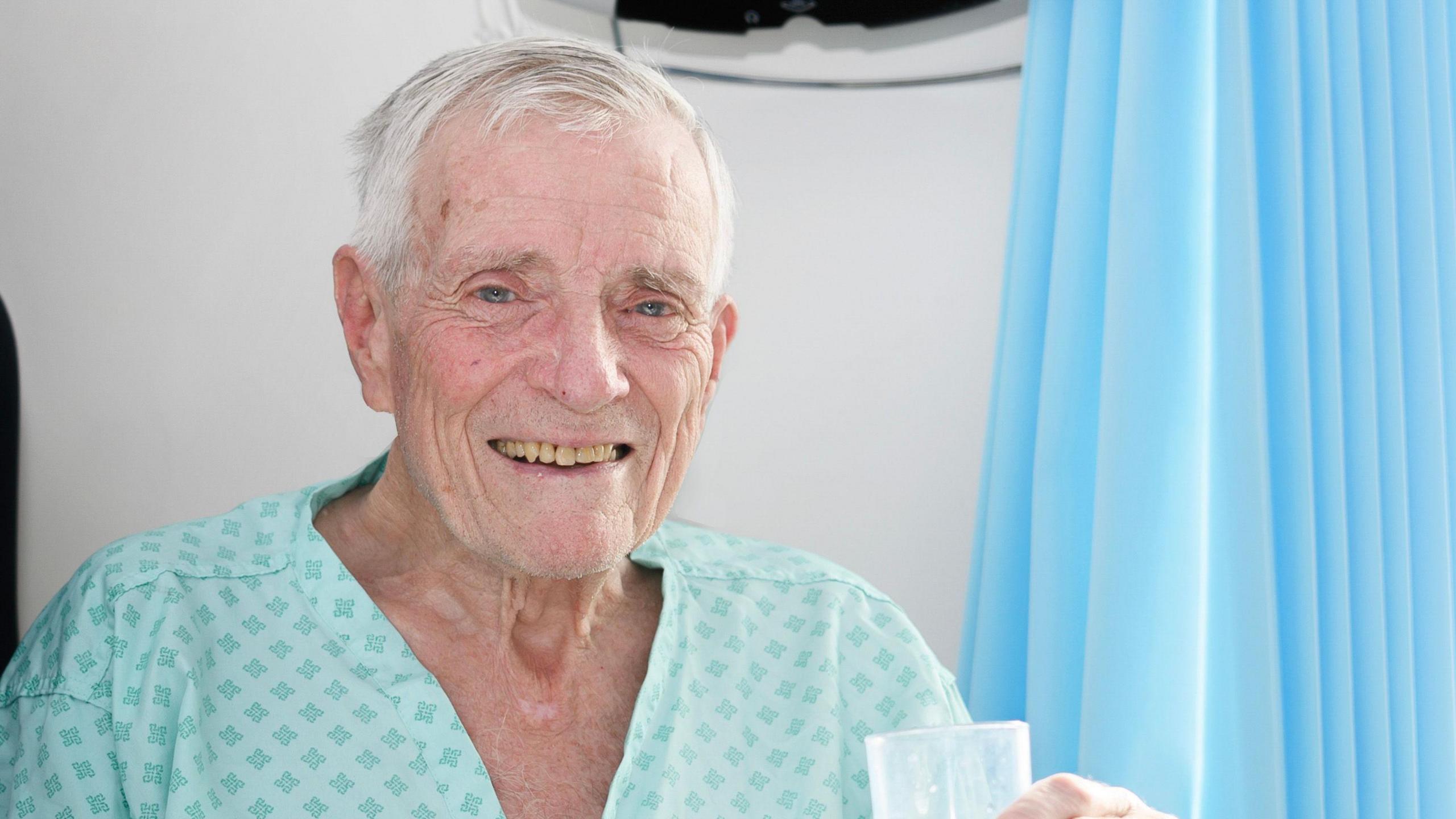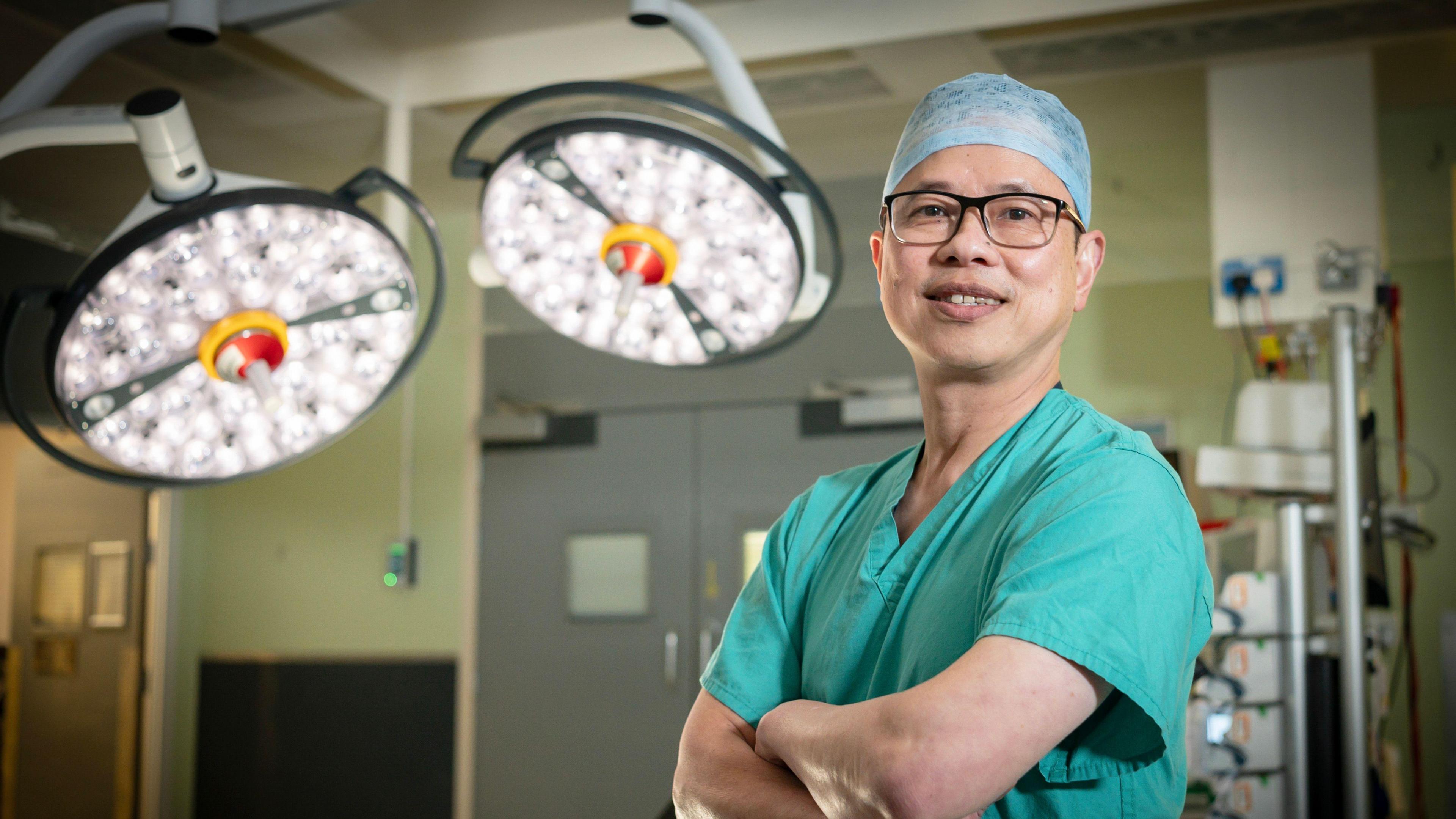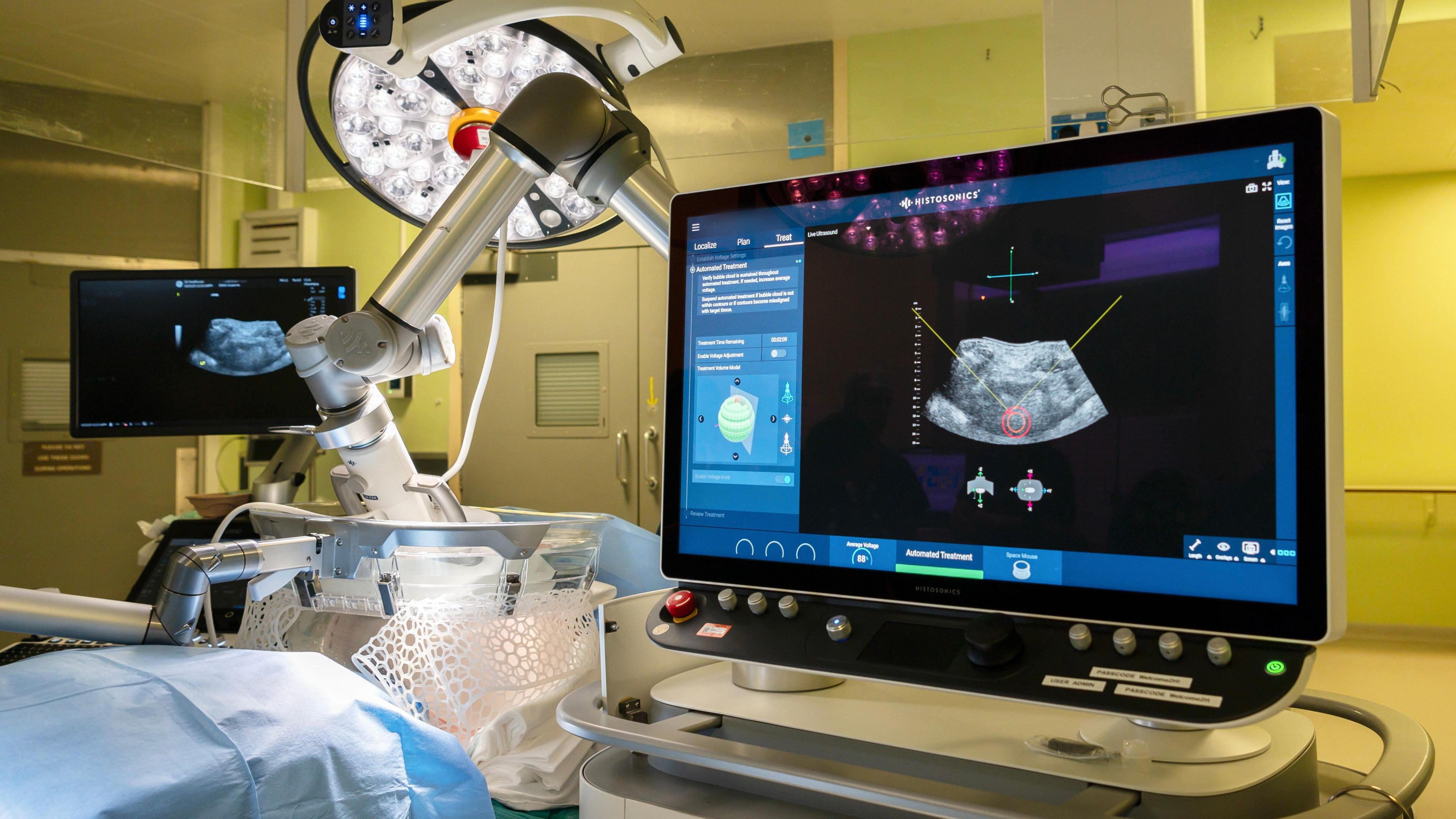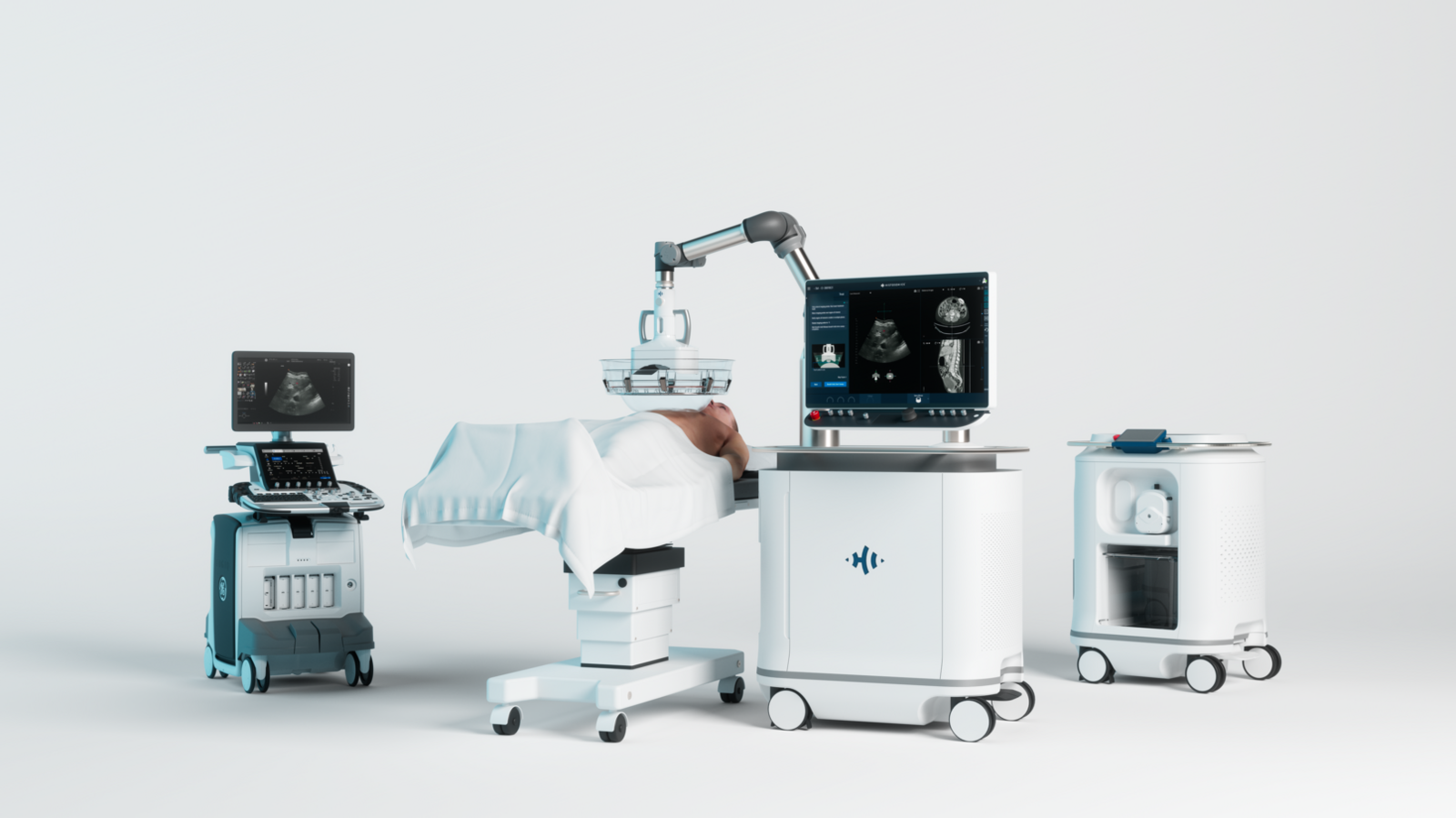First patient receives pioneering cancer treatment

Roger Jackson, 80, from Bedford, had the incisionless treatment for liver cancer and was discharged the next day
- Published
A hospital has become the first in Europe to deliver a pioneering non-invasive liver cancer treatment.
After being fast-tracked by government, Addenbrooke's in Cambridge was cleared to carry out histotripsy procedures on patients outside of clinical trials.
Roger Jackson, 80, from Bedford, was one of the first to receive the treatment which uses sound waves to break down tumours, offering a safer and faster alternative to traditional methods like chemotherapy or radiation.
Consultant interventional radiologist, Dr Teik Choon See, said it was a "major" advancement in cancer care.

Dr Teik Choon See is the consultant interventional radiologist at Cambridge University Hospitals NHS Foundation Trust
The technology, developed by US firm HistoSonics, was installed at Addenbrooke's due to a donation from the Li Ka Shing Foundation.
The hospital was given early access to the technology by the government, before it received full regulatory approval.
Treatment takes as little as 30 minutes with minimal or no pain, and a quick recovery time for patients.
"Histotripsy represents a major and exciting step forward in cancer treatment," said Dr See.
"It allows us to target tumours more precisely while sparing surrounding healthy tissue, offering patients a safer and faster alternative to traditional therapies.
"What is even more promising is in some reported cases, after the sound waves break apart the tumour, the patient's immune response may become activated and clear up some remaining cancerous tissues, showing real hope for patients."

The Edison Histotripsy System uses sound waves to create microscopic bubbles in tumour tissue, which collapse rapidly to destroy cancer cells
Mr Jackson, who was the first NHS patient to receive the treatment, said he was discharged the following day.
"It is impressive to think that sound waves can treat cancer, without the need for patients like me to go through intensive surgery, at what already is a stressful time," he said.
"I'm hugely grateful to the team at Addenbrooke's for their specialist care and expertise."
Treatment was initially being offered to selected patients with tumours from primary and secondary liver cancers.
Health and social care secretary, Wes Streeting, said it marked the beginning of a new generation in cancer treatment.
"We are lighting the fuse beneath the technological revolution, transforming care for NHS patients," he said.
The hospital's chief executive Roland Sinker said the innovation could reduce stays, improve wait times and free up surgeons.
Get in touch
Do you have a story suggestion for Cambridgeshire?
Follow Cambridgeshire news on BBC Sounds, Facebook, external, Instagram, external and X, external.
Related topics
- Published10 June
